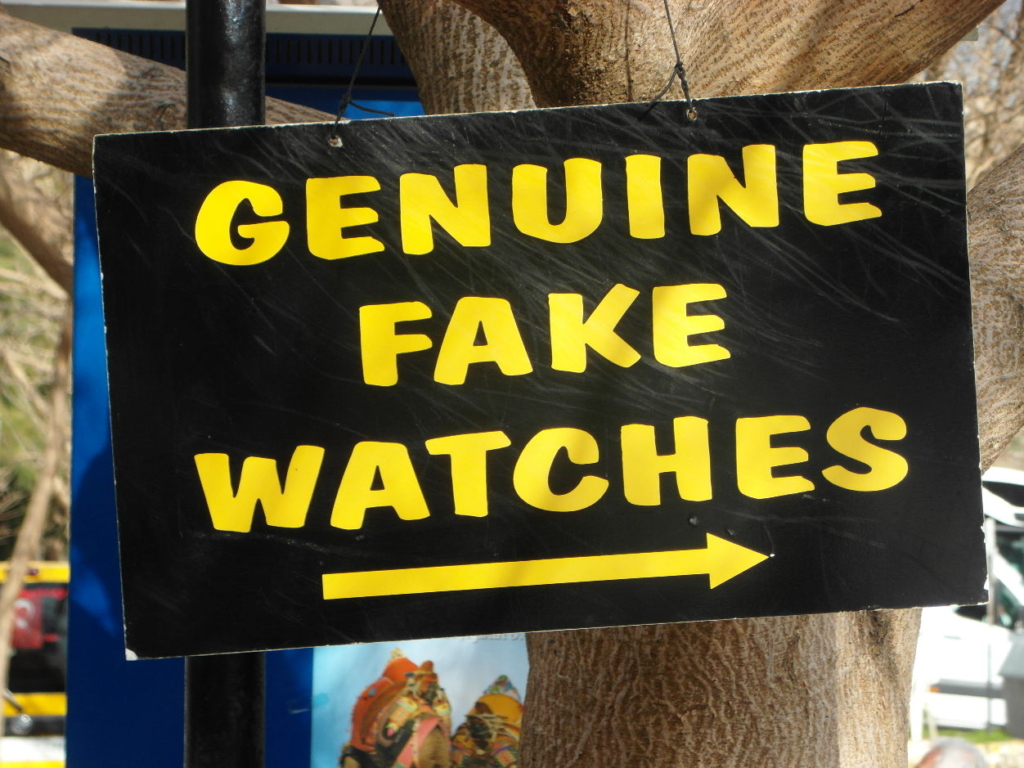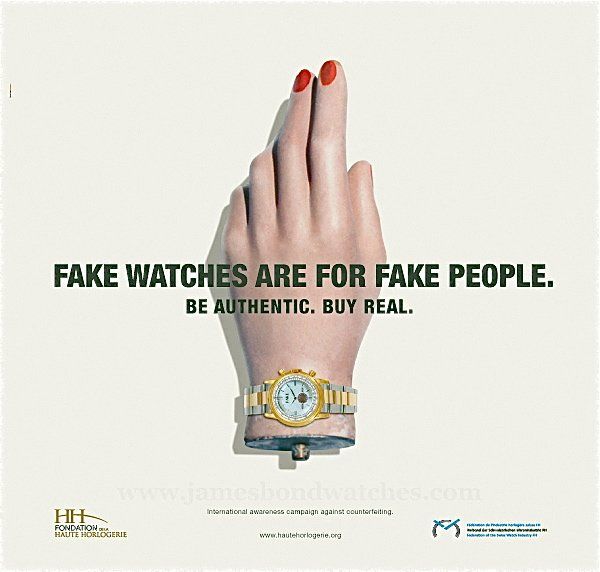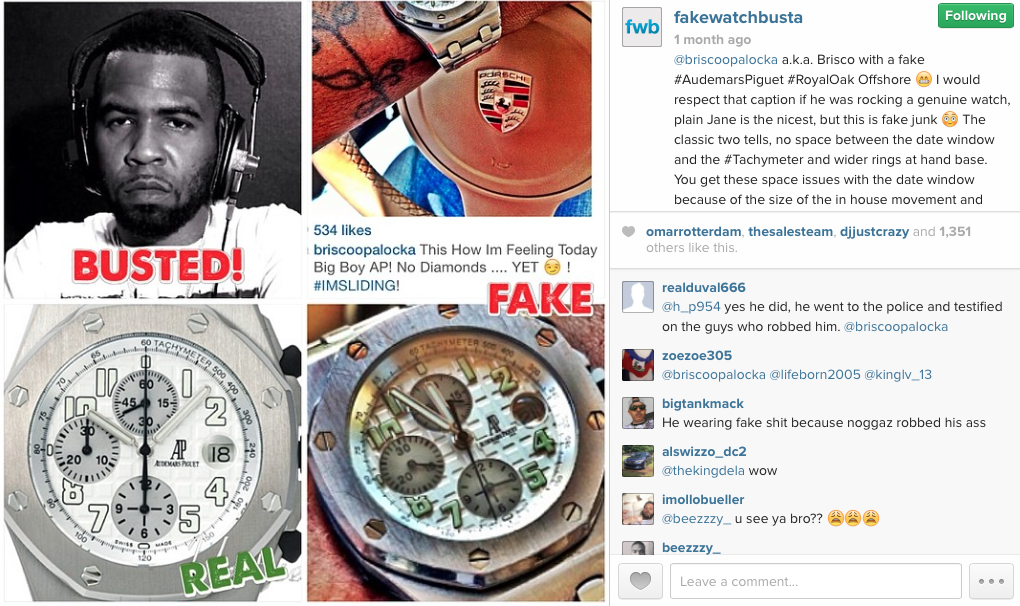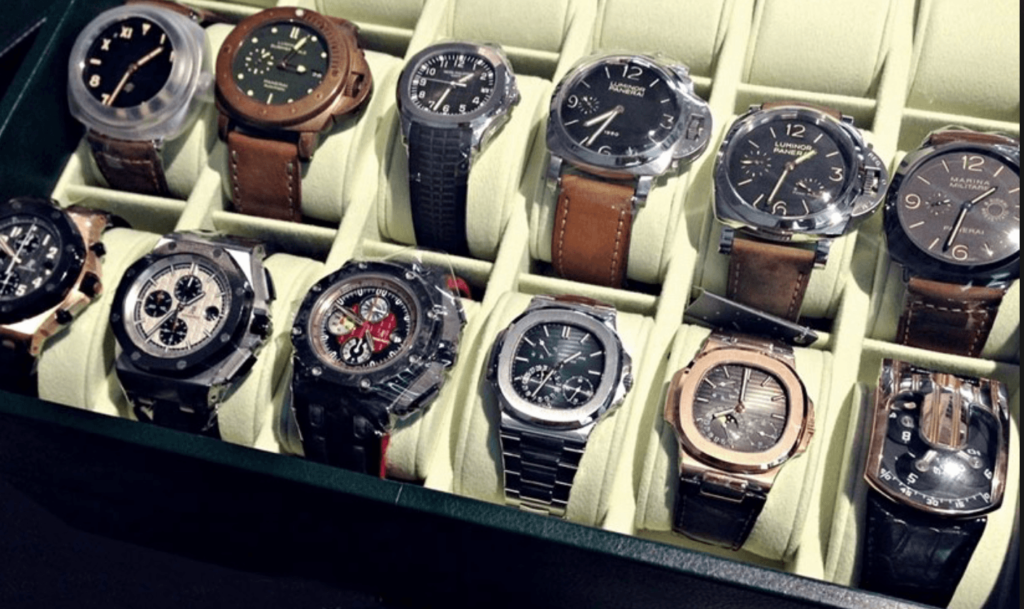Further to Dr James Nye’s thought provoking views on transparency in the watch industry, MrWatchmaster responds:
Dr Nye covered the issues of fakery in general and in particular, the veracity of claims made by watch manufacturers in their objective to create brand desirability and ultimately value.
Fake, counterfeit or replica are, in our opinion, just semantic adjectives for stealing.
One of the objectives of creating a brand is to convince the consumer that only that brand can deliver on their needs. That the brand is desirable and worth the investment and that the purchaser has made a great decision. In some cases, other people’s approbation of their decision is an intrinsic motive.
Buying a fake watch brand involves some complicated behavioural issues. These vary depending on whether it is simply a ‘knock off’ or a more conscious decision to appear as legitimate as possible.
In the advertising industry, we often refer to a 1946 study of Japanese culture by the American Anthropologist, Ruth Benedict: ‘The Chrysanthemum and The Sword’.

To paraphrase, ‘Shame’ is a social phenomenon. It is what we feel when we imagine others discover what we have done. ‘Guilt’ is personal. It’s what we personally think about what we have done.
Someone buying a fake watch for a few tens of Dollars in a street market knows it is a fake. They are highly unlikely to be able to afford the real thing. They probably won’t wear it, it will quickly break and it will lie in a draw, forever. There is unlikely to be any feelings of either shame or guilt.
These ‘knock-offs’ probably don’t have any great influence on the profitability of the watch manufacturers they seek to imitate. The absence of ‘shame’ or ‘guilt’ lies in the conscious purchase of something that is clearly a fake, a joke. Admittedly, this would inevitably change if the buyer was more aware of the working conditions in which it was ‘manufactured’, who was the end beneficiary of their Dollars and is, potentially, a stepping stone to greater crimes.

Then there are those who consciously buy a fake with the intent of passing it off as genuine. If they feel guilt, it is presumably at a level they can live with. Whilst the knowledge of their deception remains internalised, it is unlikely that much will stop them wearing their purchase with ‘pride’.
Whilst probably simplifying a very complex psychological and anthropological debate, it is likely that the key to changing their behaviour is to switch their feelings from ‘guilt’ to ‘shame’.
To be publicly exposed. To have their behaviour externalised, transforms the guilt into shame.
There are many examples, particularly within Public Sector communications, where this has succeeded. The use of seat belts in the 1970’s and more recently stopping people ‘drinking and driving’. Both were endemic until it became obvious that most people abide by the law and it became shameful to flaunt them. Up until this point, people probably felt guilty, but were able to live with this guilt. When most people stuck by the law, it became socially unacceptable and shameful.
Back in 2011, the Fondation de la Haute Horologie launched an initiative ‘take a true look at fakes’, inviting students to develop films on this theme. You can see them here. The Wedding scene (Un Homme Swiss Made), below is worth a look!
Prior to this, in 2009, they ran the publicity campaign detailed below – “FAKE WATCHES ARE FOR FAKE PEOPLE”.

Does this approach play on ‘shame’ or ‘guilt’? It is an attempt to label people with a shameful moniker. However, if their guilt remains concealed, it remains unchanged from the original guilt that did not deter them from purchasing a fake in the first place. Until it is externalised it is not shame.
Meanwhile, the vigilantes are naming and shaming. @fakewatchbusta has 358,000 followers on Instagram where they publicise fake watches and their owners, predominantly in the music industry. It is interesting to see the reaction of the person ‘called out’.

The offending picture is usually deleted and then it is either a security issue (own the real thing, but wear the fake) or someone else’s fault (the stylist). This more direct shaming is probably quite effective amongst @fakewatchbusta’s audience, but might be thought of as a bit over the top by the broader and more conservative watch industry.
One conclusion from this brief look at the issue of fakes is that there doesn’t appear to be a coordinated and consistent communications approach to this issue by the watch industry. Perhaps there is more going on, but it is not obvious.
The Federation of the Swiss Watch Industry carries out surveillance at various watch and clock fairs and there appears to be good collaboration between various watch bodies and the those that protect customs and borders. Courts around the world are busy and many counterfeiters are shut down.
However, in the digital age, the consensus appears to be that this is a case where the Little Dutch Boy’s finger is not enough.
The key point is that it is at the consumer level that the purchase of fakes needs to become socially unacceptable. This is a global issue and there is a need to study the behaviour and motives behind the purchase of fake watches in different territories.
Cross industry initiatives are not uncommon.
Even a small proportion of global watch sector marketing budgets allocated to changing consumer perceptions should have a significant effect. Expanded to the broader Luxury Sector, it could be hugely significant.
Should the watch industry not be seen to be protecting its value?
Whilst the digital world offers illegal websites much scope to hide, it has also unleashed an army of people who love watches (observers, enthusiasts, manufacturers, retailers etc.) and universally condemn ‘fakes’ across multiple channels. This is, in our opinion, a compliant force who would be more than willing to help communicate a coordinated message to consumers.
Moving on to James’ second point, regarding transparency of watch manufacturers’ claims to be ‘in-house’ or in relation to their country of origin, he makes the point that an ever more powerful spotlight will see spurious claims tested in the ‘white hot crucible’ of watch forums.
‘Word-of-mouth’ has always been the most powerful communication channel (compared with PR, Advertising etc.).
With digital channels, word-of-mouth becomes digital. Anyone with a point of view can influence a far broader group than was possible before the internet came along.
Sometimes this is a bad thing (Fake News, Trolling etc.), but sometimes it is a force for good.
James is absolutely right that digital word-of-mouth will shine a light on products that over-claim or under deliver. Remember when the Apple iPhone 4 was launched with a ‘dodgy’ aerial or the Samsung Galaxy S7 exploded?
In summary, don’t underestimate the value of digital word-of-mouth. It can be used for good. It could be used to change people’s behaviour regarding the purchase of fake watches and it will police manufacturers’ claims.
It is time for the industry to join together and beat the fakers.

